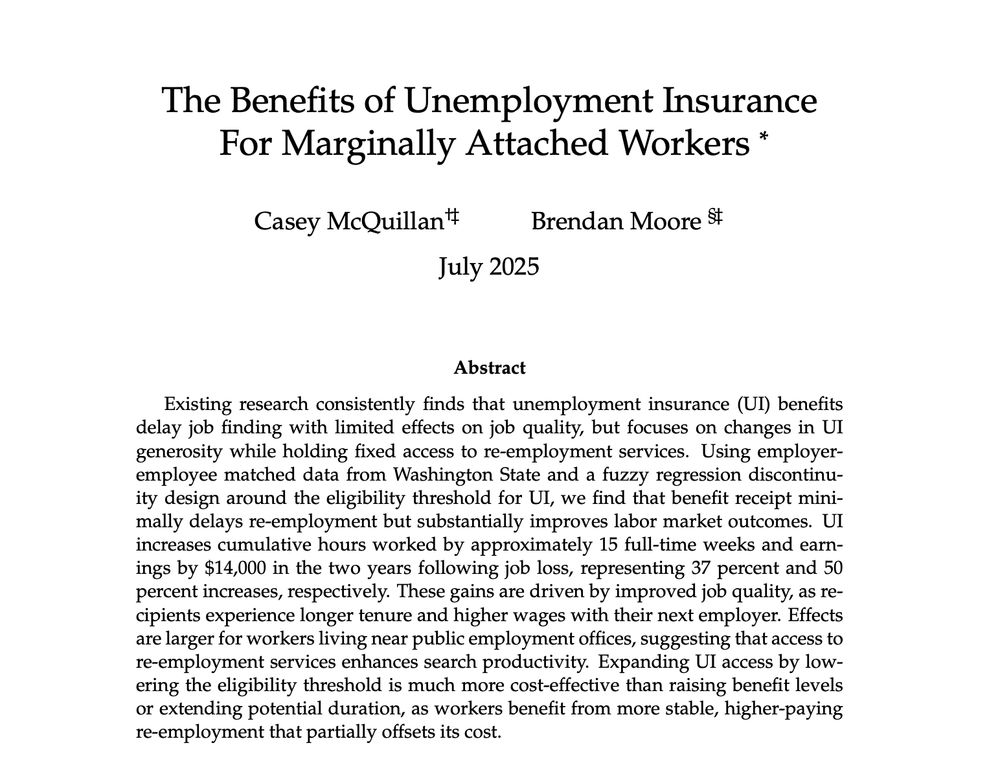Casey McQuillan
@caseymcquillan.bsky.social
210 followers
140 following
21 posts
PhD Candidate at Princeton interested in labor economics, public finance, and causal inference | GRFP Fellow at NSF | Former RA at NewYorkFed | AmherstCollege '18
Website: https://casey-mcquillan.github.io/
Posts
Media
Videos
Starter Packs












